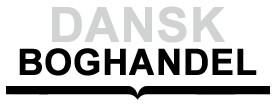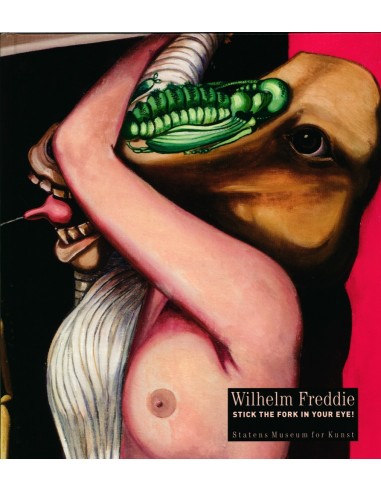Your cart
Der er ikke flere varer i din indkøbskurv
Stick the Fork in Your Eye
Stick the Fork in Your Eye, We Shall Be Glad to Eat Ourselves is the title of a painting by Wilhelm Freddie (1909-1995). Join the feast! This is how we are confronted with Freddie’s art. It was his ambition to use artistic means to free inner forces in man. Like a fork in the eye, his art was to awaken its viewers from the unconscious slumber induced by bourgeois society.
Wilhelm Freddie is without exaggeration one of the most mythologized figures in the history of Danish art. He made his entry on the art scene in 1929 and soon became a prominent representative of the surrealist movement in Denmark – indeed in all of Scandinavia. Like his fellow artists Vilhelm Bjerke-Petersen, Richard Mortensen and Ejler Bille, he embraced surrealism from the moment he encountered it in the early 1930s and used it as a take-off point for articulating his own artistic project.
To many, Freddie’s name represents the quintessence of provocation and scandal. This friendly, forthcoming and always impeccably-dressed man, who even during hard times kept wearing starched white shirts, agitated the public mind with his art, and as early as the 1930s his work occasioned police reports.
Although Freddie is known primarily as a painter and sculptor, his creative work spans several other media and materials such as photography, ballet, window decoration, linguistic construction, and design.
The book opens with an introductory essay outlining Wilhelm Freddie’s oeuvre, followed by eight shorter articles by Danish and foreign experts, each throwing light on particular aspects. The first three of these deal with central themes such as Freddie’s concern with sexuality and his social criticism, while the remaining five focus on lesser-known media employed in Freddie’s art. Acting together as a prism, they project a more complete picture of Freddie’s oeuvre.
Wilhelm Freddie is without exaggeration one of the most mythologized figures in the history of Danish art. He made his entry on the art scene in 1929 and soon became a prominent representative of the surrealist movement in Denmark – indeed in all of Scandinavia. Like his fellow artists Vilhelm Bjerke-Petersen, Richard Mortensen and Ejler Bille, he embraced surrealism from the moment he encountered it in the early 1930s and used it as a take-off point for articulating his own artistic project.
To many, Freddie’s name represents the quintessence of provocation and scandal. This friendly, forthcoming and always impeccably-dressed man, who even during hard times kept wearing starched white shirts, agitated the public mind with his art, and as early as the 1930s his work occasioned police reports.
Although Freddie is known primarily as a painter and sculptor, his creative work spans several other media and materials such as photography, ballet, window decoration, linguistic construction, and design.
The book opens with an introductory essay outlining Wilhelm Freddie’s oeuvre, followed by eight shorter articles by Danish and foreign experts, each throwing light on particular aspects. The first three of these deal with central themes such as Freddie’s concern with sexuality and his social criticism, while the remaining five focus on lesser-known media employed in Freddie’s art. Acting together as a prism, they project a more complete picture of Freddie’s oeuvre.
- Forfatter
- Dorthe Aagesen & Mette Houlberg Rung
- ISBN13
- 9788792023292
- ISBN10
- 8792023290
- Udgave /år
- 1 / 2009
- Forlag
- SMK Forlag
- Sidetal
- 279
- Indbinding
- Indbundet

